The Google Nest Audio is the Mountain View, California-based company’s latest follow-up to its first smart speaker, Google Home, which was released four years ago. With a completely different design, the Google Nest Audio’s name clearly indicates that this time around, it’s not just about voice recognition and domestic features, but rather that it is “all about sound.”
The Nest Audio, though less expensive than its predecessor, claims it is 75% louder and has 50% stronger bass. With a 75 mm woofer, a 19 mm tweeter, and a real-time audio processing algorithm, it promises “rich, full sound,” “crisp vocals,” “room-filling powerful bass,” and the ability to adapt to its acoustic environment.
We put the Google Nest Audio through our rigorous DXOMARK Wireless Speaker test suite. In this review, we will break down how it fared at audio playback in a variety of tests and several common use cases.
Key specifications include:
- One 75 mm woofer, one 19 mm tweeter
- Bluetooth, Google Cast
- No battery
- No 3.5 mm jack input
- Stereo pair capable
- Google Assistant
- 124 x 175 x 78 mm
- 1.2 kg
Test conditions:
- Tested with Motorola G8 for music, Xiaomi Mi TV Box S for movies
- Communication protocol used: Google Cast for music, Bluetooth for movies
- Firmware version: 227185
About DXOMARK Wireless Speaker tests: For scoring and analysis in our wireless speaker reviews, DXOMARK engineers perform a variety of objective tests and undertake more than 20 hours of perceptual evaluation under controlled lab conditions. This article highlights the most important results of our testing. Note that we evaluate playback using only the device’s built-in hardware. (For more details about our Speaker protocol, click here.) The Google Nest Audio falls into the Essential category of devices in the DXOMARK Speaker rankings.
Test summary
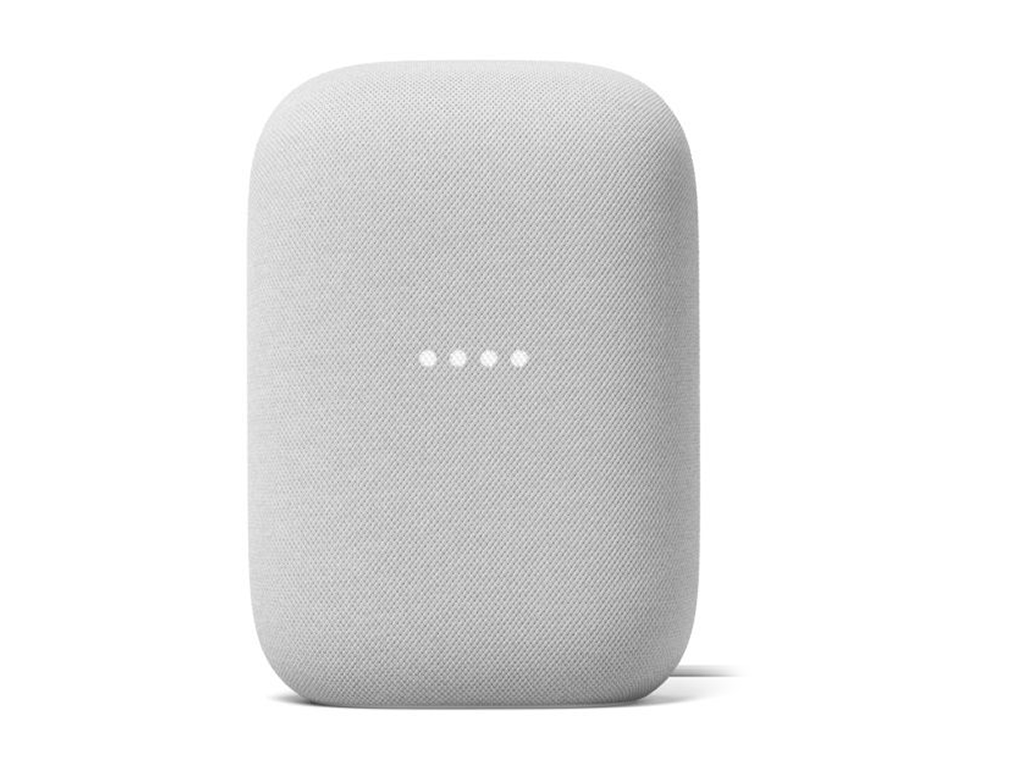 Google Nest Audio
Google Nest Audio


The Google Nest Audio, with its score of 112 in our Essential wireless speakers category (priced under 200 euros) is fairly impressive. It came in second among all the devices we’ve tested to date in that segment, outranked only by the Amazon Echo Studio, which costs twice as much.
The Google Home’s successor delivers remarkable maximum volume for its size and great overall volume consistency. Despite its loudness, our engineers observed very few artifacts; regardless of the use case and the music genre, temporal artifacts are never an issue. Further, the Nest Audio ensures a fairly consistent tonal balance in most use cases, with precise treble and clear midrange as well as sharp attack and realistic distance rendering for medium to high-pitched voices and instruments. While not as efficient and complex as the Google Home Max, the Nest’s ability to adapt to its acoustic environment is an interesting feature for online vocal content such as podcasts, news reporting, and audiobooks.
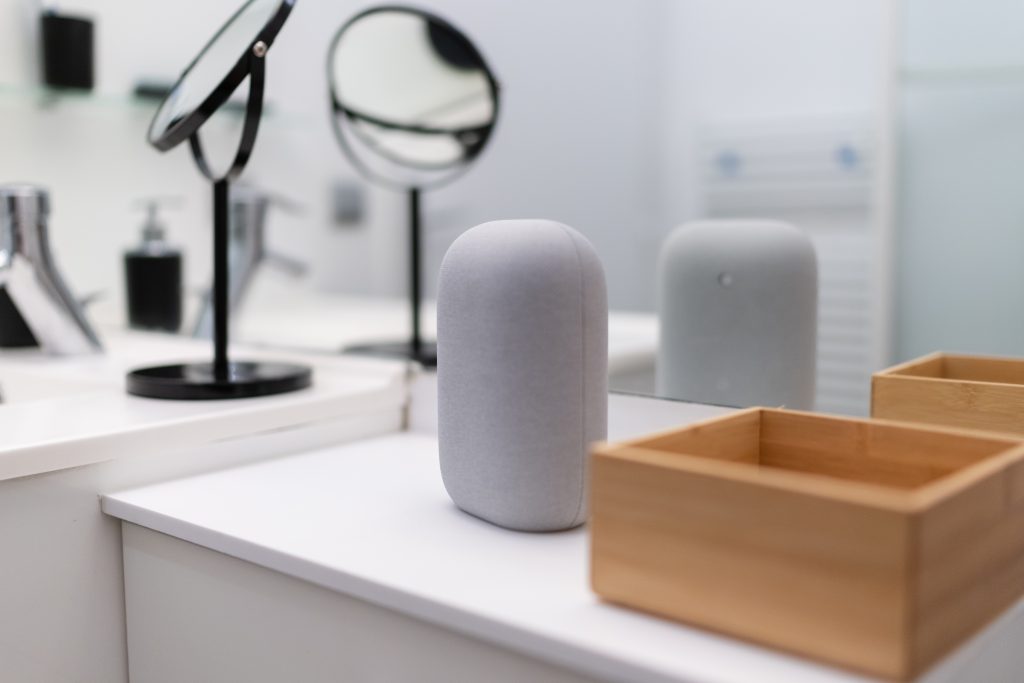
Since the Google Nest Audio is mono and front-firing, the sound reproduction isn’t consistent around the speaker, and its wideness is nil. Bass and low-midrange are significantly lacking across all use cases, which along with occasional low-end resonances, affects bass precision and midrange rendering. High-end frequencies are also a bit lacking, which can be perceived on high-pitched instruments such as cymbals. At loud volumes, punch is rather disappointing. Finally, note that Ambient IQ doesn’t work with locally stored files, and that the Audio-Video latency induced by both Bluetooth and Google Cast is quite significant.
Sub-scores explained
The DXOMARK Speaker overall score of 112 for the Google Nest Audio is derived from a range of sub-scores. In this section, we will take a closer look at these audio quality sub-scores and explain what they mean for the user, and we will show some comparison data from two of the Google Nest Audio’s principal competitors in the Essential category, the Amazon Echo Studio and the Xiaomi Mi Smart Speaker Battery Edition.

Timbre
Google Nest Audio
114
152
DXOMARK timbre tests measure how well a speaker reproduces sound across the audible tonal range and takes into account bass, midrange, treble, tonal balance, and volume dependency.
The Google Nest Audio delivers a good timbre performance. Its sub-score sits in between the Amazon Echo Studio at 123 and the Xiaomi Mi Smart Speaker Battery Edition at 108. As advertised, midrange and treble are indeed clear and precise.
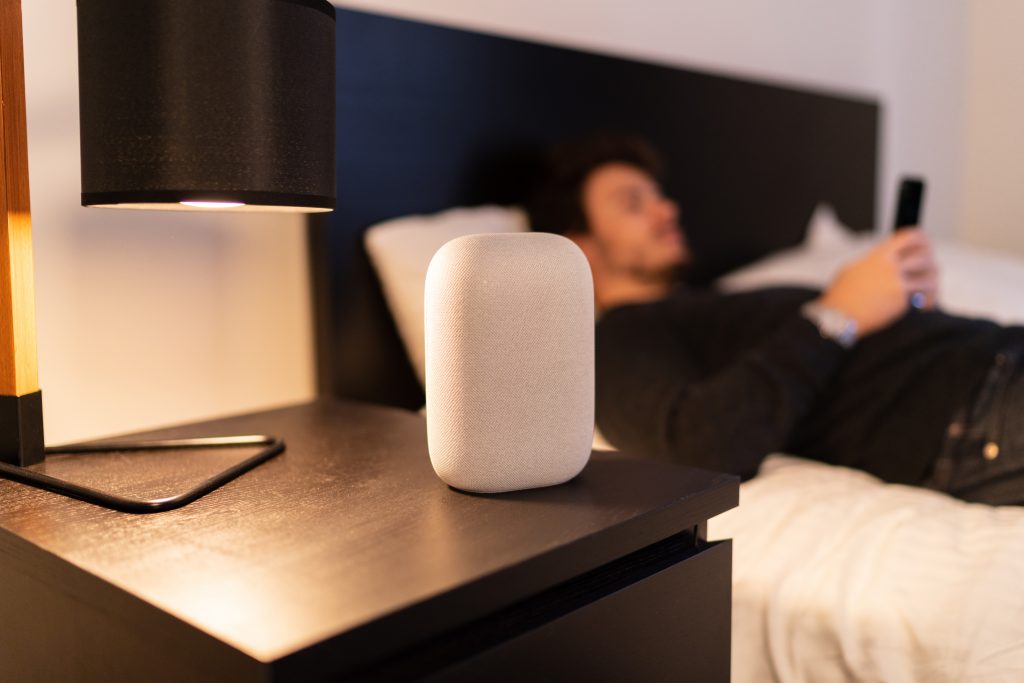
Further, the tonal balance is fairly consistent overall, regardless of the volume. This ensures a particularly good performance in our bedtime use case, since audio remains fully intelligible, even at quiet volumes.
However, high-end extension is a bit lacking, as evidenced by the clean cut at 16 kHz (above 10^4 Hz). As a comparison, you can see that neither the Echo Studio’s frequency response nor the Mi Smart Speaker Battery Edition’s exhibits such a sudden drop. This mainly impairs high-pitched instruments, such as cymbals (hi-hats, tambourines, etc.). The speaker also suffers from a significant lack of bass from quiet to maximum volumes. Further, the graph shows a clear withdrawal around 250 Hz (low-mids) which can affect podcast renderings, and more generally, low-pitched voices.

Dynamics
Google Nest Audio
99
137
Our dynamics tests measure how well a device reproduces the energy level of a sound source, taking into account attack, bass precision and punch.
The Google Nest delivers an average dynamics performance, with sharp attack at nominal and quiet volumes, at which percussion and piano manage to still be present and well defined, but also with particularly weak punch at loud volumes.
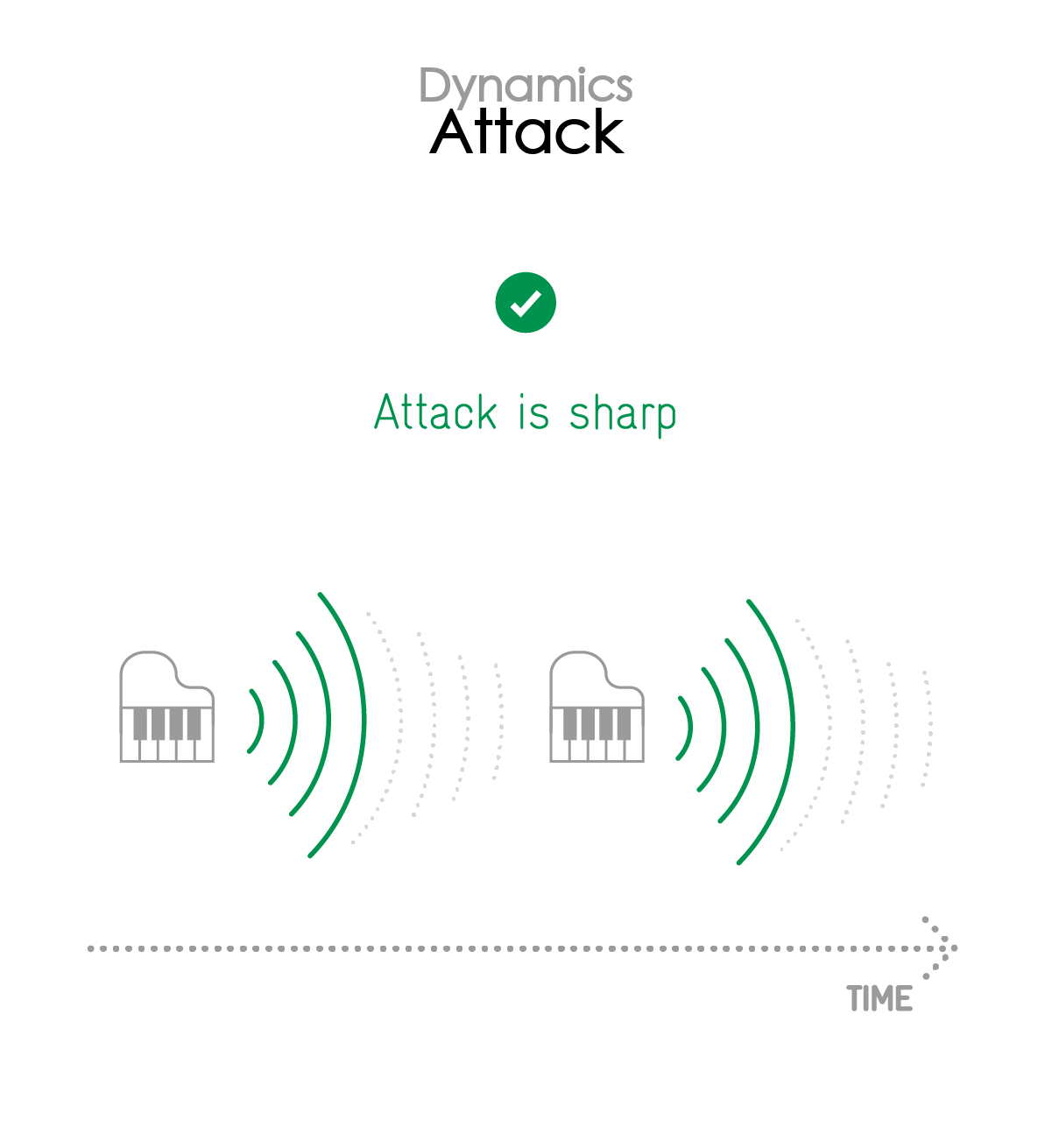
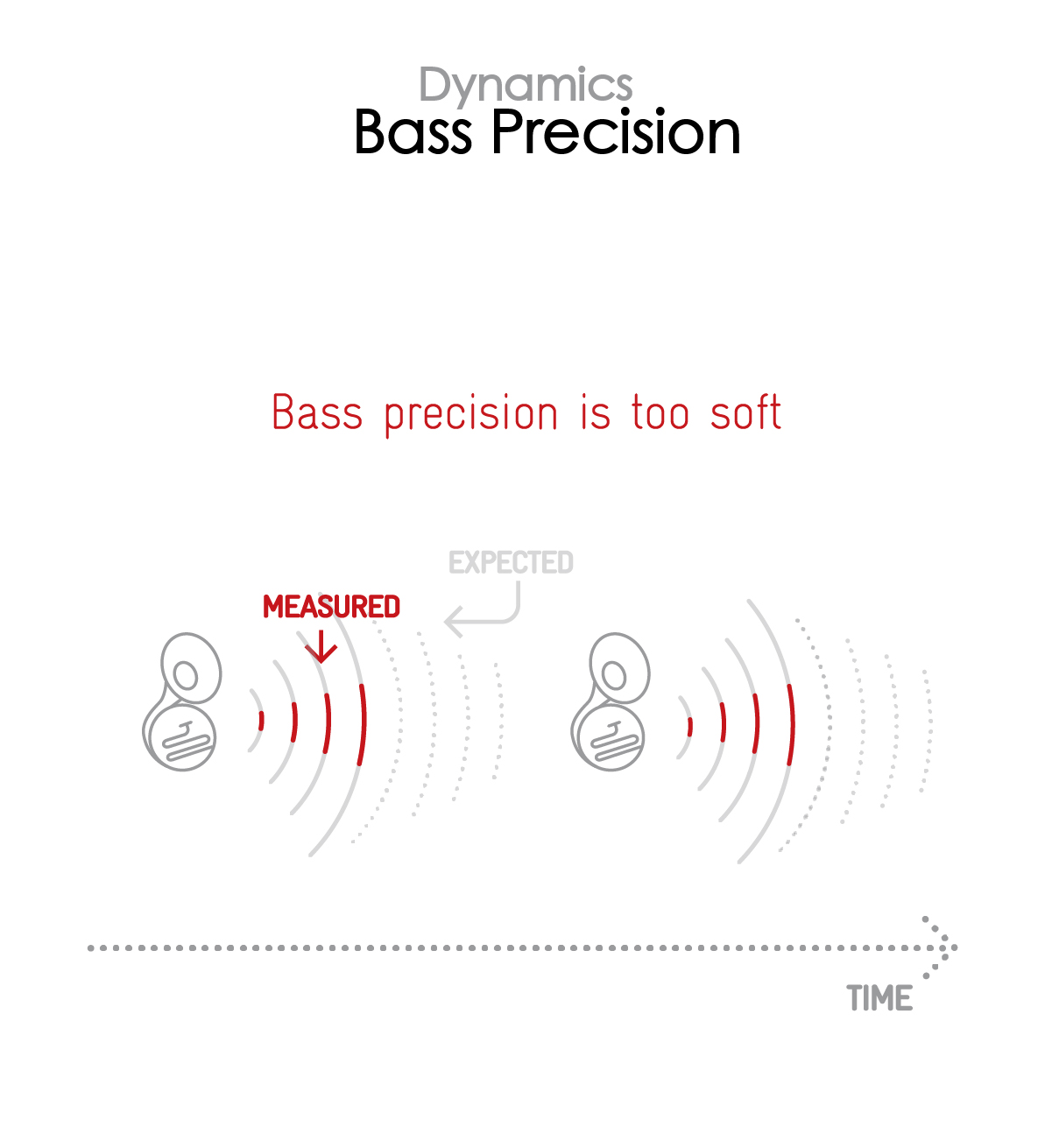
The previously mentioned lack of bass accompanied by occasional low-end resonances triggered by heavy bass mixes (such as electronic music) considerably impair bass precision, especially in our bedtime and party use cases (less so at soft, nominal, and maximum volumes).

Spatial
Google Nest Audio
75
111
Our spatial tests measure a speaker’s ability to reproduce stereo sound in all directions, taking into account localizability, balance, wideness, distance and directivity. Please note that wideness is 0 on mono speakers and speakers that cannot deliver a significant stereo effect, as is the case for the Google Nest Audio.
As you can easily guess from the speaker’s design and specifications, the Google Nest Audio is mono and front-firing, which of course substantially affects its spatial sub-score.
Consequently, wideness is nil, and directivity (the speaker’s ability to project 360° sound) is highly limited. This means the listener has to be in front of the device to be able to correctly hear mids and treble.

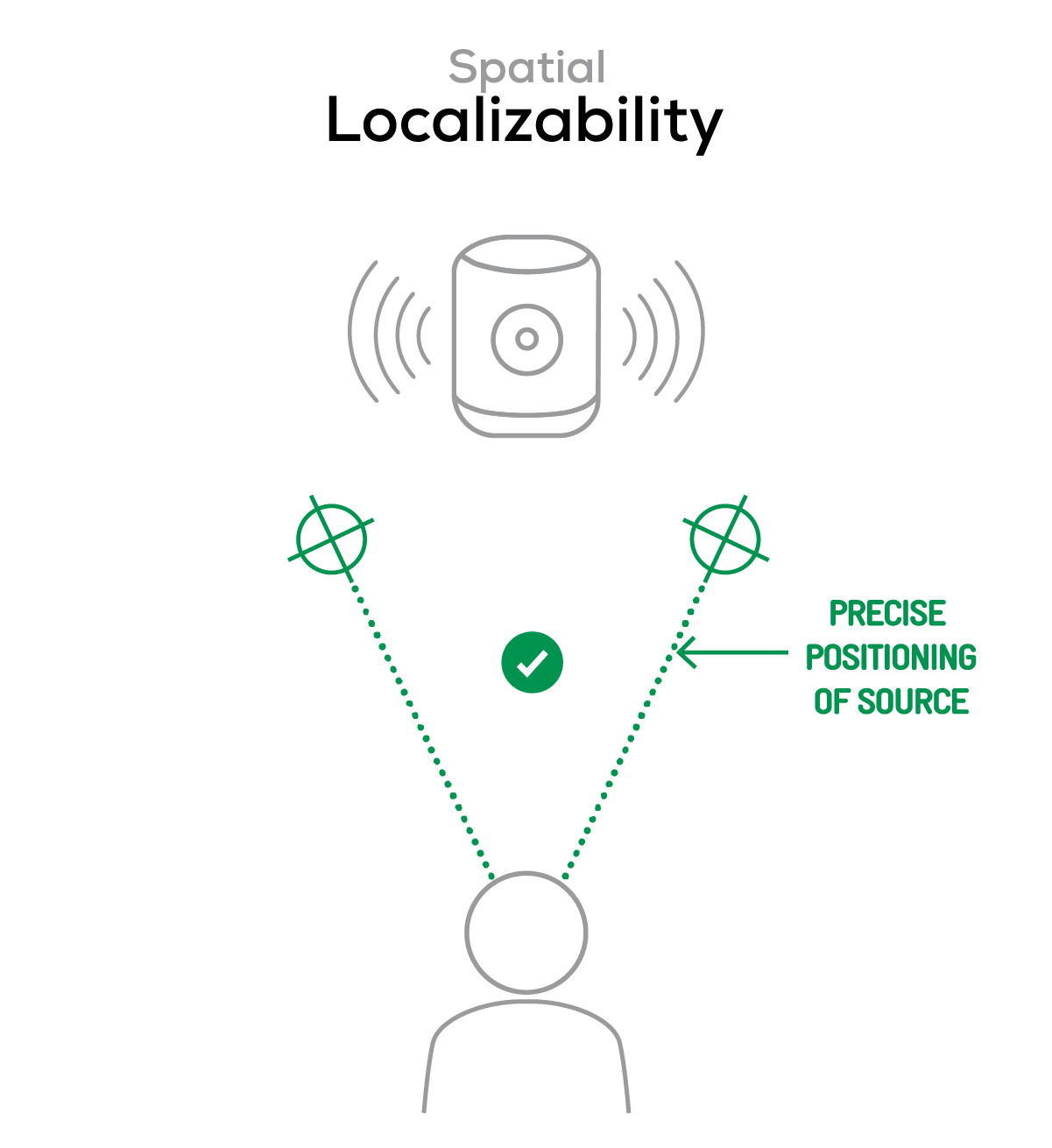

Volume
Google Nest Audio
121
141
Our volume tests measure both the maximum loudness a speaker is able to produce and how smoothly volume increases and decreases based on user input.
Google’s Nest Audio fares extremely well in the volume area, thanks to an impressive maximum volume considering its size, and natural volume steps from minimum to maximum volume.
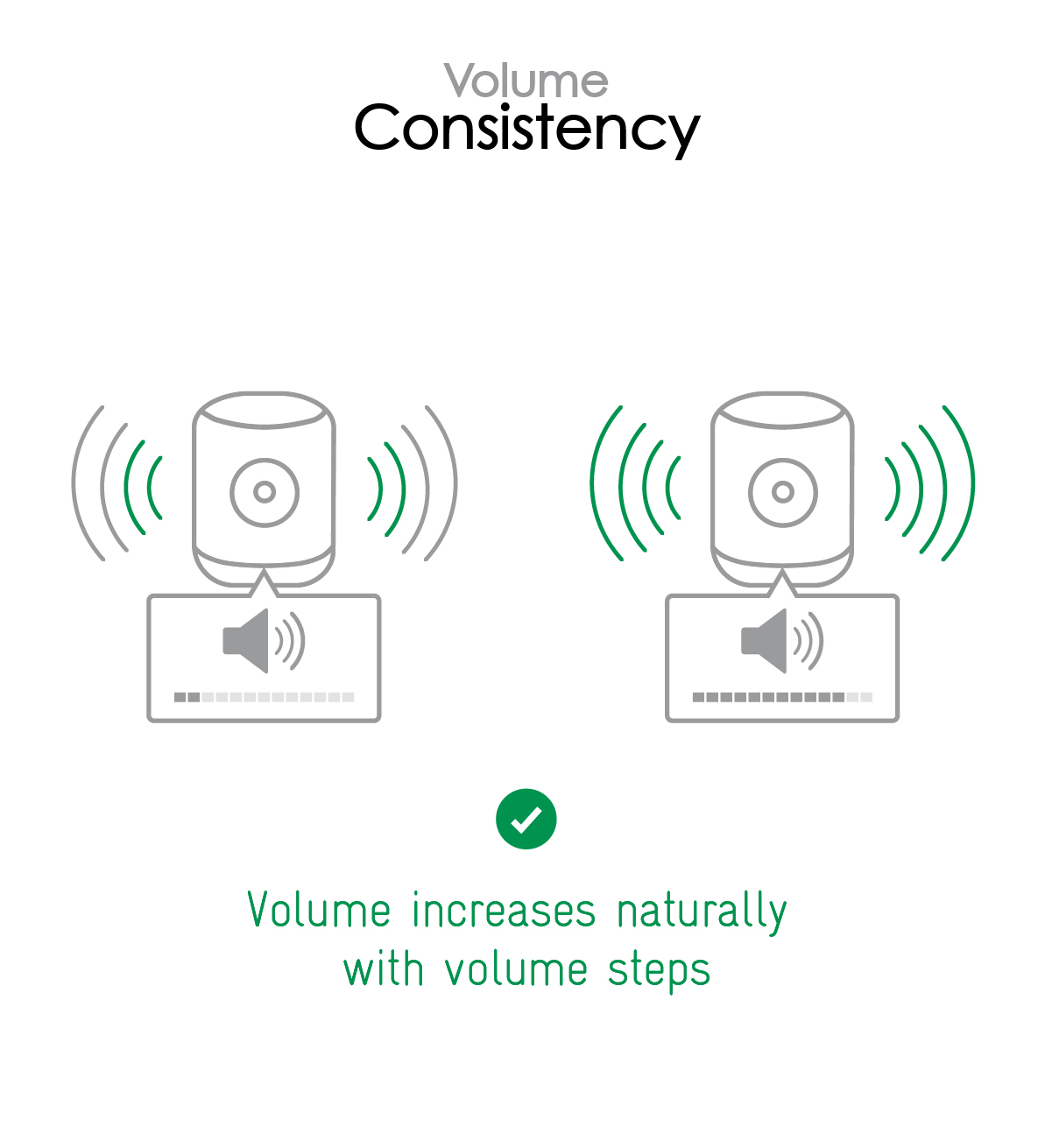
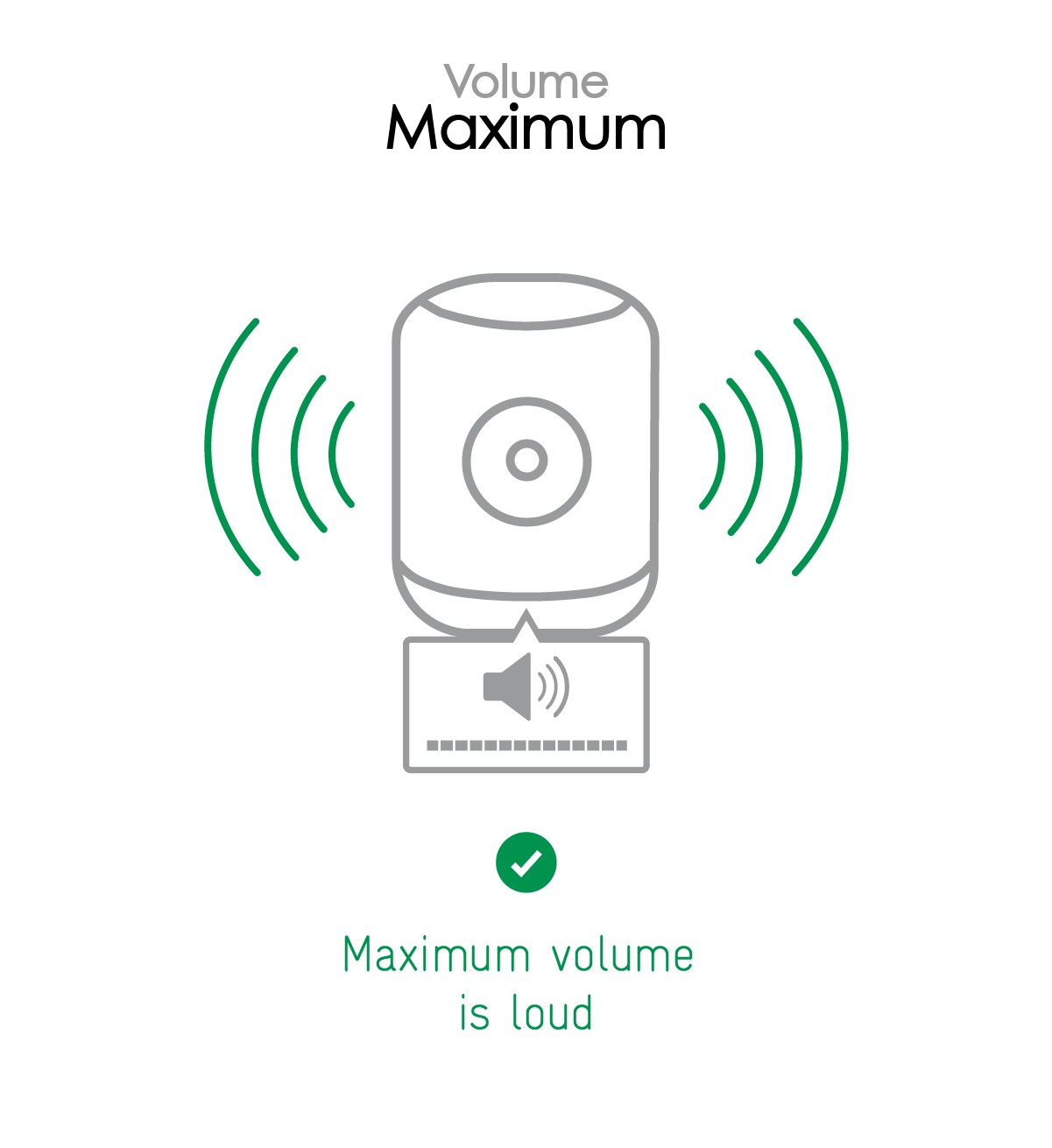
The speaker’s embedded Ambient IQ algorithm works with vocal content such as online podcasts, news reporting, and even audiobooks. It automatically adapts the playback’s frequency response and volume to the background noise to keep content intelligible. However, Ambient IQ doesn’t seem to work when playing back local files from a smartphone.
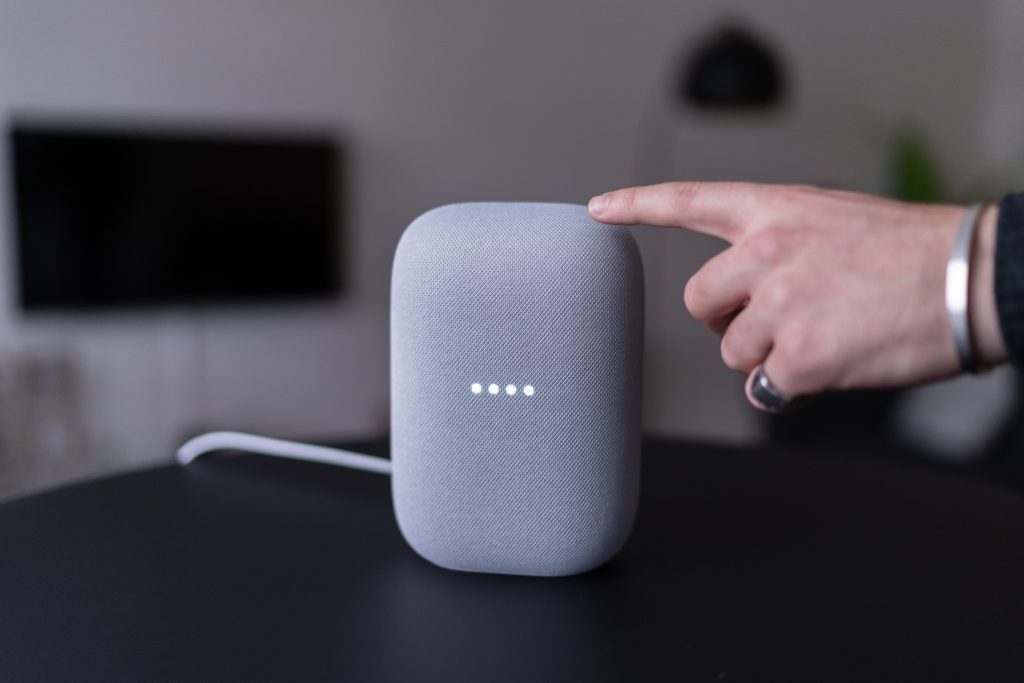
Here are a few sound pressure levels (SPL) measured when playing our sample recordings of hip-hop and classical music at maximum volume:
| Correlated Pink Noise | Uncorrelated Pink Noise | Hip-Hop | Classical | Latin | Asian Pop | |
| Google Nest Audio | 81.3 dBA | 78.4 dBA | 79.3 dBA | 71 dBA | 81.2 dBA | 72.2 dBA |
| Amazon Echo Studio | 84.8 dBA | 79.6 dBA | 81.1 dBA | 72.2 dBA | 80.7 dBA | 75.6 dBA |
| Xiaomi Mi Smart Speaker Battery Edition | 78.9 dBA | 78.4 dBA | 73.5 dBA | 70.2 dBA | 74.9 dBA | 66.8 dBA |

Artifacts
Google Nest Audio
111
133
Our artifacts tests measure how much source audio is distorted when played back, along with such other sound artifacts as noise, pumping effects, and clipping. Distortion and other artifacts can occur both because of sound processing and because of the quality of the speakers.
Sound played back through Google’s Nest Audio exhibits very few artifacts overall, despite its particularly loud maximum volume. Temporal artifacts (dynamic compression) are imperceptible in every music genre and across all use cases, from listening to quiet podcasts before sleeping all the way to partying with loud music.
As for spectral artifacts, slight bass distortion is noticeable at loud volumes (for example, in our party use case), and audio clicks can occasionally be triggered by strong transients (such as snares). Our testers observed no other user artifacts.
Since both Bluetooth and Google Cast latencies are quite significant, note that the Google Nest Audio is not the ideal speaker to watch videos with, unless you can manually adjust the time delay.
Conclusion
Considering its category, the Google Nest Audio delivers a highly honorable performance, with impressive maximum volume, very few artifacts, precise treble and clear midrange, and an interesting ability (in the form of Ambient IQ) to adapt its volume to the background noise. Further, its tonal balance and volume consistency makes it a good choice for relaxing at home and for listening to music or podcasts before going to sleep. However, bass is significantly lacking; sound is unevenly distributed around the speaker; and a noticeable latency is induced by both wireless connections, making it unsuitable for watching videos, unless manually adjusting the time delay is an option.
Pros
- Good overall performance
- Tonal balance is fairly consistent in most use cases, with precise treble and clear midrange.
- Attack is sharp, especially at nominal and even at quiet volumes.
- Distance rendering is realistic on high-pitched voices.
- Impressive maximum volume for the speaker’s size
- Great volume consistency, with smooth volume increases
- Ambient IQ is an interesting feature for online voice content.
- Very few artifacts overall
Cons
- Significant lack of bass across all use cases
- Midrange rendering is affected by a lack of low-mids.
- Slight lack of high-end extension on high-pitched instruments (such as cymbals)
- Lack of punch, especially at loud volumes
- Bass precision is impaired by a lack of bass and occasional resonances.
- Sound is unevenly distributed around the speaker and its wideness is nil, since the speaker is mono and front-firing.
- Distance rendering is not accurate on low-pitched voices.
- Ambient IQ doesn’t work with locally stored files.
- Audio/Video latency is significant via Bluetooth and Google Cast.

 English
English 中文
中文
DXOMARK invites our readership (you) to post comments on the articles on this website. Read more about our Comment Policy.